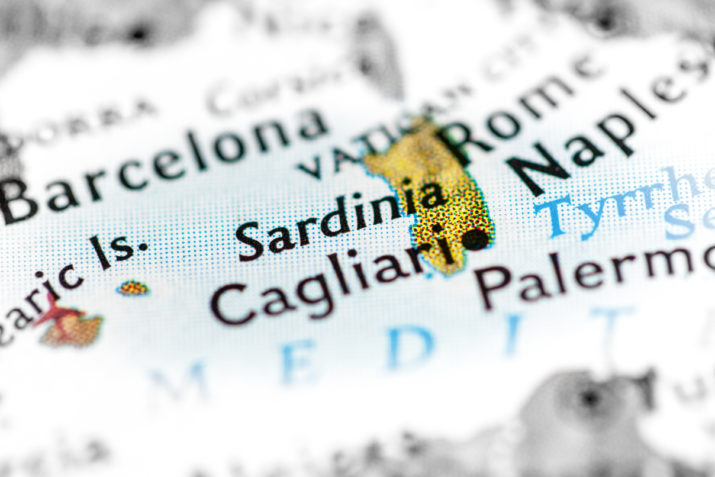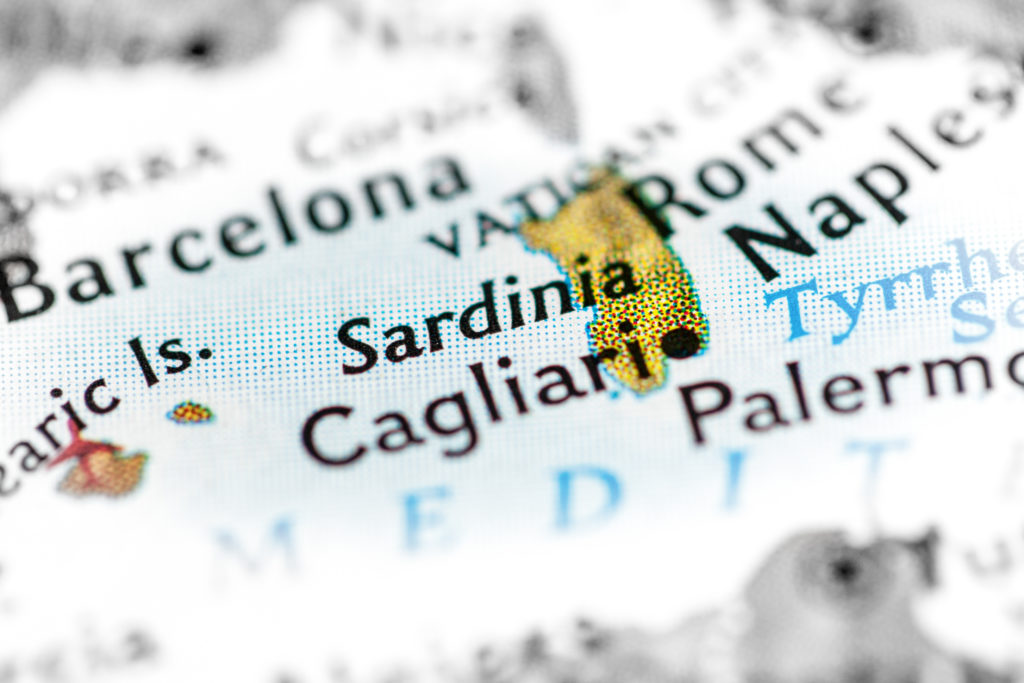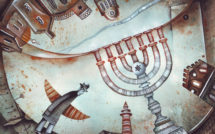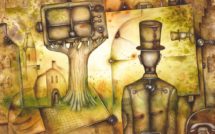

This is part of our special feature, United in Diversity.
In a globalized world, the concept of a national identity and a national literature is being challenged. Identity is not immutable and assigned at birth. It is rather a lifelong process of reflection and study. It develops and grows, and sometimes it is also invented if a precise identity is lacking. There are identities that are ampler, more plural and complex than others, and they help to enlarge the borders of one’s nation.
In recent decades, the island of Sardinia, the second-largest island in the Mediterranean after Sicily, has lived a cultural renaissance that has brought many Sardinian authors onto the national and international literary stage. This article highlights how this success shows an opening of the Italian literary canon, traditionally founded on a very prescriptive and unitarian idea of literature and identity, which excludes texts that reflect a multilingual and multicultural reality.I identify the main features of this cultural flourishing and success of Sardinian authors outside the island. This success heavily relies on the interest created around this Italian region, an island considered by many geographically and culturally distant from the Italian mainland.
The artistic vitality in Sardinia has been defined by the critic Goffredo Fofi as a “nouvelle vague,”[1] and by the journalist, writer, and critic Giacomo Mameli as a “Sardinian literary spring.”[2]
Despite the popularity of these definitions, this labeling is rather misleading. It seems to suggest a renaissance of Sardinian literature emerging after a dark period in which literary production was absent. This idea is incorrect, for Sardinia has a long literary tradition that spans centuries: “Sardinia has always had its own literature, which goes back as far as the 11th century.”[3]
Alfredo Franchini,[4] writing about the “nouvelle vague mediterranea” [Mediterranean nouvelle vague], remarks on the surprising number of publications coming from Sardinia: “Sardinian artists are experiencing a particularly favorable moment that, where the publishing industry is concerned, resulted in the publication of 250 titles per year by 45 regional publishers.”[5]Franchini explains the success of Sardinian authors like Salvatore Niffoi (1950–), Salvatore Mannuzzu (1930–), Marcello Fois (1960–), Giorgio Todde (1951–), and Flavio Soriga (1975–), who publish for national publishers, with a change in readers’ attitudes toward regional languages and dialects.
This interest for a literature that moves from the fixity of a literary canon to embrace a more fluid representation of contemporary Italian identity shows an audience more receptive to a multicultural and multilingual idea of national identity. This tendency goes against the prescriptiveness of a national literary canon that in Italy was established around the artificial standard of the Italian language. The extraordinary example represented by the works of Dante, Boccaccio, and Petrarch paved the way for writers who came after them and who could not avoid resorting to the language elaborated by these exemplary authors. Italian, as a modern language, finds its roots in the Tuscan dialect forged into a literary language by the Three Crowns of Italian literature.
Furthermore, Italian unification in 1861 highlighted the lack of national unity of the Italian people. It is said that Massimo d’Azeglio, a Piedmontese-Italian political leader made this famous remark: “Italy is made, we now need to make Italians.”[6] With this, d’Azeglio meant that people in the newly unified state did not identify as Italians but they continued to feel a stronger attachment to the region they inhabited and to their local language and culture.
Gigliola Sulis remarks how the compilation of anthologies helped the elaboration of a unitarian idea of Italian literature and culture. Francesco De Sanctis’ Storia della letteratura italiana (History of the Italian Literature) was particularly influential in establishing an Italian literary canon based on linguistically and culturally homogeneous works. De Sanctis, embracing the unitarian tendencies of the Italian Risorgimento, interpreted the history of Italian literature as a teleology, functional to the creation of the Italian Kingdom. In order to do so, he strengthened the unitarian elements, downplaying diversities. Carlo Dionisotti defined this text as “the only book that offered and still offers to the majority of Italians…. a unitarian interpretation of their history.”[7] De Sanctis simplified the geographical, historical and social complexity of the peninsula to forge a culturally homogeneous Italian identity.[8]
Frequently, authors of peripheral areas like Sardinia are in contact with more than one language or culture. They escape the constraints created by the idea of the nation state and the binary association of one language with one nation as formulated during the nineteenth-century. Therefore, these writers and their literature are not easily classifiable inside a specific national literary canon centered on the idea of a common national language. Deleuze and Guattari coined the term “minor literatures” to describe such works that break with normativity.[9]
Sardinia, due to its decentralized position and its unique history, marked by the encounters with several cultures is not easily inscribable inside a rigorously Italian history of literature.[10] For Deleuze and Guattari, a central component of a minor literature is the deterritorialization of its language. According to them, a language becomes deterritorialized when it strays away from the norms of the dominant standardized language.[11] Sardinian writers were often multilingual and wrote in the several languages spoken on the island, mostly Sardinia, Spanish, Catalan, and Italian: Sardinian production has been deterritorialized from the start. This linguistic diversity is the result of the succession of dominations on the island;[12] it contributed to language mixing and contamination, and opened up the path for a spurious use of languages by Sardinian authors.
Another distinctive feature of the majority of Sardinian contemporary authors is the central presence of the island in their narrative. Sardinia is often the setting of the events narrated and Sardinian identity emerges in the description of Sardinian customs and traditions and in the references to the Sardinian language. Sardinian is used along Italian in a linguistic mix that can be minimal, as in the works of Salvatore Mannuzzu, or more predominant, as in those of Atzeni, Niffoi or Fois; this unconventional use of Italian manipulates the standard to create a hybrid language.
Sergio Atzeni (1952–1995) was one of the most important Sardinian authors of the second half of the twentieth century. He is considered one of the precursors of the so-called Sardinian Literary Spring. His production is profoundly influenced by the history, culture, and language of Sardinia, and his legacy continues to influence Sardinian writers.
Sergio Atzeni, like many Sardinian authors, finds his inspiration in the island, to which he feels a deep attachment. In an interview, Atzeni stated: “Non riesco ad immaginare storie che non siano ambientate qui. Mi sento sardo e come tale mi presento dovunque vado” [I cannot imagine stories that are not set in Sardinia. I feel Sardinian and as such I introduce myself, wherever I go].[13] He also admires the Sardinian language, which he defines as “bellissima” [very beautiful];[14] he is saddened by the progressive loss of this language: “mi dispiace che si perda perché è idioma straordinariamente ricco” [I’m sorry about the loss of this language, since it is an extraordinary rich one].[15] Atzeni appreciates the mixing of and contamination between languages, which he sees as an enrichment for the Italian language as well: “L’unico modo in cui posso arricchire la lingua italiana dal punto di vista dei vocaboli è recuperandoli dalla esperienza sarda” [The only way in which I can enrich the vocabulary of Italian is drawing words from Sardinian].[16]
One of the most characteristic features of Atzeni’s style is the unique use he makes of linguistic contamination. This tendency can already be observed in his debut novel, Apologo del giudice bandito (1986),[17] in which he inserts names and place names derived from the Sardinian language. These insertions give his narrative a sense of linguistic otherness that will continue throughout his production. Atzeni’s language becomes progressively more contaminated by different languages, registers, and codes. He grafts Sardinian syntax and vocabulary onto the Italian language, creating a hybrid, a composite puzzle of linguistic systems.
The most accomplished result of Atzeni’s linguistic experimentation is the story Bellas Mariposas [Beautiful Butterflies], published in 1996.[18] This tale is a monologue presented by the protagonist Caterina, a young girl who lives in a dysfunctional family with an unemployed slacker father, a mother who is relegated to the role of housewife, and several other siblings: one older sister, Mandarina, who has two young children and who works as a prostitute to support herself and her daughters; Tonio, a violent guy; and Massimo, a drug addict; Alex, who plays in a band; Ricciotti, a promising soccer player; and Luisella, who is only one-and-a-half-years old. In this tale, we follow the young protagonist and her best friend Luna through an entire day: August 3, of an undefined year. Caterina will tell us, with a humoristic and at times poetic style, the stories of the neighbors in her degraded suburb of Cagliari, the capital city of Sardinia, and her adolescent dream of redemption from the misery and degradation of her family and surroundings.
In this work, the author perfects the mixing of Italian, Sardinian, and other languages, like English and Spanish, in a seemingly perfect fusion of linguistic codes. The title itself is an example of code-switching. It can be read in Spanish or Sardinian; in fact, the word “bellas” [beautiful] and “mariposas” [butterflies] are the same in the two languages. This linguistic phenomenon is defined as the “alternation of two languages within a single discourse, sentence or constituent.”[19] The title is a testimony to the linguistic influence of the Spanish language on the island due to the Aragonese-Spanish rule, which lasted from the thirteenth century to the beginning of the eighteenth century, when the island passed into the hands of House of Savoy.[20]
In Bellas Mariposas, Atzeni intertwines Sardinian and Italian in such a way that it is almost impossible to separate the two languages. In the same sentence, we find words, expressions, and syntactic forms in both languages in a continuous game of code-switching. Some examples of the peculiar language mixing recurrent in the texts are:
- “lo presenta quella caghina famosa Battistina Puresciori” [(the show) is hosted by that famous affected woman Battistina Puresciori];[21]
- “in pullman c’era un grezzo” [on the bus there was a vulgar man];[22] and
- “guardando la stria non si è accorto …” [looking at the bitch, he didn’t realize …].[23]
Atzeni is not the first Sardinian author to mix Italian and Sardinian in his writing. Code-mixing between the two languages can also be observed in Grazia Deledda’s novels, the only Italian woman to be awarded, in 1926, the Nobel Prize for literature. However, Atzeni perfected this art, especially after the encounter he had with Patrick Chamoiseau in 1993 and the translation he made of Chamoiseau’s novel Texaco.[24] Meeting with the Martiniquais writer and translating his work exerted a strong influence on the Sardinian author. The creolized French used by Chamoiseau inspired Atzeni to experiment with a similar form of creolization that mixed Italian with the Sardinian language.[25]
Another distinctive element of Sardinian literature is the reflection on the idea of sardità, of what it means being Sardinian. Sardinian literary works often depict Sardinian identity in a stereotypical way. The traditional representation of the island described a territory outside history and time. Immovable, unchangeable, and archaic. This is what made and still makes Sardinia fascinating in the eyes of non-Sardinians. The island is seen as an exotic place, inhabited by fierce and brave populations animated by extreme passions that can lead to vindictive and destructive actions. Maurizio Virdis observes that the island had to be distinguished from the Italian mainland. Its peculiar identity had to be clearly marked in contraposition to Italy and the rest of the world. Life on the island had to be sketched in strong colors so that its distinctiveness could emerge as much as possible.[26]
The interior of the island, the setting of Deledda’s novels, became the paradigm of a true Sardinia. According to this narrative, people inhabiting this region were less contaminated by outside invaders and spoke the most genuine form of Sardinian. The myth of an authentic Sardinia is reinforced with the urbanization processes that put the rural and urban areas of the island into contact with each other. From every part of the island, people flowed to the main Sardinian cities like Cagliari and Sassari. The main language of communication in urban agglomerations became Italian, and the Sardinian language started to lose ground. The so-called “Piani di Rinascita” [Rebirth Plans], imposed by the Italian government on Sardinia, forced the creation of industrial areas on the island and brought an imposed, violent modernization to the region. This process was aimed at improving the Sardinian economy but was not successful; it polluted large areas of Sardinia and contributed to the weakening of the Sardinian identity and language without producing long-lasting significant economic growth. During the seventies, the defense of Sardinian identity and language became a central theme for those political groups that defended the right to self-determination of the Sardinian people. The debate about identity has linguistic and literary aspects, as well as assuming political significance.
Contemporary literary production on the island continues the tradition of reflecting and elaborating on Sardinian identity, but it does so projecting a less monolithic image of the island, multiform and composite. Sardinia is not just the archaic, rural, mythical place symbolized by the mountainous central villages of the island, keepers of the true Sardinian essence. The contrast between a real rural Sardinia and an altered urbanized Sardinia ceases to exist. Sardinian identity is expressed in rural villages as well as in urban contexts.
Atzeni is the Sardinian author that more directly engaged with the idea of Sardinian identity. He re-examines Sardinian history in a mythopoeic perspective, which deconstruct a rigid idea of identity. This tendency is particularly evident in his posthumous novel Passavamo sulla Terra Leggeri (1996),[27] where the author fictionalizes Sardinian history and fictitiously recreates the language of ancient Sardinian populations. His aim is that of providing a Sardinian mythology in which Sardinians can anchor their peculiar, distinct identity.
Atzeni brings a revolution into Sardinian works moving the settings of narration from the interior of the island to the coast and Sardinia’s major city, Cagliari. This is a new trend in Sardinian literature. In fact, Sardinian writers of the beginning of the twentieth century, like Deledda, came from the interior of Sardinia, and set their stories in the city of Nuoro and its surroundings, in the central mountainous part of the region. Atzeni and the new generation of Sardinian writers discover Cagliari, the major city on the island, and write about a more urban environment. Atzeni states: “I believe we need to narrate about Sardinia in its entirety, until now the Sardinian area that received most attentions by Sardinia writers has been Barbagia,… but I believe that is also important to write about Cagliari… and all the Sardinian villages.”[28]
The new generation of Sardinian writers engage with the traditional crystallized representation of Sardinian identity that writers like Deledda contributed to propagate.
Marci states that Sardinian identity has often been represented as immutable and unperturbed by history, but in reality, it is in continuous evolution. Globalization processes reaffirmed the importance of local identities and the value of cultural mixing. Sergio Atzeni appreciated cultural contaminations and although maintaining a clear focus on Sardinian history and culture, modulates his writing so that it could welcome the three different souls that he believed were constitutive of his personality: the Sardinian, the Italian and the European one, giving a more global resonance to Sardinian identity.[29]
The works of Sardinian authors that find an audience outside the island are distinctive for the prevalent Sardinian setting and a style that frequently resorts to language mixing. These components oppose the rigidity of the national literary canon that aimed at presenting a cultural and linguistic uniform history of Italian literature. Marci remarks that although the Sardinian people was not able to coalesce around a political project of an independent Sardinian State, its cultural production maintained a cultural specificity that distinguishes the Sardinian literary corpus from the Italian one.[30]
Contemporary Sardinian production maintains its specificity but suggest a more malleable idea of identity. Sardinian authors are in equilibrium between several worlds: the regional and the national, the periphery and the center. They defend the value of their specific identity but do not fear the contact with the outside world that they embrace and incorporate inside their Sardinian identity.
Sardinian authors maintain a strong connection with their place of origin and at the same time embrace the consequences of a globalization process that has weakened Sardinian tradition and culture. The defense of one’s identity is conducted without warding off the effects of a society progressively more globalized, open to external influences and ways of life. The idea that the true essence of Sardinia culture is to be found only in the central mountainous areas of the island, keepers of a pure Sardinian language and ethos, leaves way to a more modern idea of sardità, more generalized to the whole island and less influenced by ideas of cultural purity.[31]
A recent global political climate in Italy favored the success of nationalist parties that aim at exalting a supposed national identity and at fighting cultural and linguistic contaminations. These parties foment the belief that the recent migration waves involving Europe are a menace to the preservation of a national identity. The works of contemporary Sardinian writers demonstrate how the nationalist rhetoric of parties like the Italian Northern League supports a monolithic conception of an Italian identity that has no validation in the history of the country, a culturally and linguistically diversified territory in which different identities coexist inside the overarching national frame of the Italian identity.
Giovanni Dettori currently teaches Comparative Literature at the University of Binghamton, New York. In his work he explores problems of identity in contemporary Sardinian and Corsican literature. He also attends to the preservation of minor languages like Sardinian and Corsican.
References
Atzeni, Sergio Il mestiere dello scrittore in Sì…otto, (Cagliari, Condaghes, 1996).
Brevini, Franco (edited by), La poesia in dialetto. Storia e testi dalle origini al Novecento (Milano: Mondadori, 1999, v. II). 1531-1532.
Broccia, Michele. “The Sardinian Literary Spring: An Overview: A New Perspective on Italian Literature.” Nordicum-Mediterraneum 9 no.1 (2014): 1–20.
Contarini, Silvia, Margherita Marras, and Giuliana Pias. L’identità sarda del XXI secolo: Tra globale, locale e postcoloniale. Nuoro: Il maestrale, 2012.
Deleuze, Gilles, Guattari, Félix, Bensmaïa, Réda, and Polan, Dana B. Kafka: toward a minor literature (Minneapolis: University of Minnesota Press 1986).
Fofi, Goffredo. “Sardegna, che Nouvelle Vague!” Panorama November 13, 2003.http://archive.wikiwix.com/cache/20140323160617/http://archivio.panorama.it/home/articolo/idA020001021715 (16 February 2019).
Franchini, Alfredo. “Chiamatela pure nouvelle vague mediterranea.” Specchio May 14, 2005.
Gigante, Claudio.”Fatta l’Italia, facciamo gli Italiani’. Appunti su una massima da restituire a d’Azeglio.” Incontri: rivista europea di studi italiani,26, no. (2) (2011): 5-15.
Mameli, Giacomo. “In Sardegna una nuova primavera.” La Nuova Sardegna, February 20, 2008. https://www.cuec.eu/in-sardegna-una-nuova-primavera/ (16 February 2019).
Marci, Giuseppe. Sergio Atzeni: A Lonely Man. Cagliari: CUEC, 1999.
Marci, Giuseppe. In presenza di tutte le lingue del mondo. Cagliari: CUEC, 2010.
Shana Poplack. Syntactic Structure and Social Function of Code-Switching. (New York: Center for Puerto Rican Studies Working Paper, 1978), 583.
Sulis, Gigliola, “Lingua, cultura, identità: Riflessioni sulla narrativa di Sergio Atzeni” Plurilinguismo e letteratura. Atti del XXVIII Convegno interuniversitario di Bressanone Bressanone 6–9 July2000). Ed. Furio Brugnolo and Vincenzo Orioles. Eteroglossia e plurilinguismo letterario. Rome: Il calamo, 2002. 553–570.
Sulis, Gigliola. “Ridefinire il canone: I dialettali e le
antologie poetiche del Novecento.” The
Italianist 24 no. 1 (2004): 77–106.
[1] Goffredo Fofi. “Sardegna, che Nouvelle Vague!” Panorama November 13, 2003.http://archive.wikiwix.com/cache/20140323160617/http://archivio.panorama.it/home/articolo/idA020001021715 (16 February 2019).
[2] Mameli, Giacomo. “In Sardegna una nuova primavera.” La Nuova Sardegna, February 20, 2008. https://www.cuec.eu/in-sardegna-una-nuova-primavera/ (16 February 2019).
[3] Michele Broccia. “The Sardinian Literary Spring: An Overview: A New Perspective on ItalianLiterature.” Nordicum-Mediterraneum 9 no.1 (2014): 1–20.
[4] Alfredo Franchini. “Chiamatela pure nouvelle vague mediterranea.” Specchio May 14, 2005.
[5] All translations in this article are my own.Gli artisti sardi stanno vivendo un momento particolarmente felice, che per quanto riguarda l’editoria, s’è tradotto nella pubblicazione da parte delle 45 case editrici regionali di circa 250 titoli in un anno
[6] This sentence is attributed to D’Azeglio but in reality is a summary of the thought he expressed in I miei ricordi see: Claudio Gigante.”Fatta l’Italia, facciamo gli Italiani’. Appunti su una massima da restituire a d’Azeglio.” Incontri: rivista europea di studi italiani,26, no. (2) (2011): 5-15.
[7] “il solo libro che alla maggioranza degli italiani abbia offerto e tuttavia offra una suggestivarappresentazione e interpretazione unitaria della loro storia” quoted in Gigliola Sulis,“Ridefinire il canone: I dialettali e le antologie poetiche del Novecento.” The Italianist 24 no. 1 (2004): 77–106.
[8] Sulis, 81
[9] Gilles Deleuze and Félix Guattari, Réda Bensmaïa, and Dana B. Polan. Kafka: toward a minor literature (Minneapolis: University of Minnesota Press 1986).
[10] Franco Brevini (edited by), La poesia in dialetto. Storia e testi dalle origini al Novecento (Milano: Mondadori, 1999, v. II). 1531-1532.
[11] Deleuze and Guattari, 16.
[12] Giuseppe Marci. In presenza di tutte le lingue del mondo. (Cagliari: CUEC, 2010), 34-35.
[13] Quoted in Giuseppe Marci Sergio Atzeni: a lonely man. (Cagliari: CUEC, 1999), 235.
[14] Marci, 35.
[15] Marci, 35.
[16] Marci, 35-36.
[17] Atzeni, Sergio. Apologo del giudice bandito. (Palermo: Sellerio, 2011).
[18] Atzeni, Sergio. Bellas Mariposas. (Palermo: Sellerio, 1996).
[19] Shana Poplack. Syntactic Structure and Social Function of Code-Switching. (New York: Center
for Puerto Rican Studies Working Paper, 1978), 583.
[20] Broccia, Michele. “The Sardinian Literary Spring: An Overview: A New Perspective on Italian Literature.” Nordicum-Mediterraneum 9 no.1 (2014): 1–20.
[21] Atzeni, Sergio. Bellas Mariposas. (Palermo: Sellerio, 1996), 74.
[22] Atzeni, 87.
[23] Atzeni, 87.
[24] Patrick Chamoiseau, Rose-Myriam Réjouis, and Val Vinokur. Texaco. ) New York: Pantheon Books, 1997).
[25] Sulis, Gigliola, “Lingua, cultura, identità: Riflessioni sulla narrativa di Sergio Atzeni” Plurilinguismo e letteratura. Atti del XXVIII Convegno interuniversitario di Bressanone Bressanone 6–9 July 2000). Ed. Furio Brugnolo and Vincenzo Orioles. Eteroglossia e plurilinguismo letterario. (Rome: Il calamo, 2002), 557.
[26] Maurizio Virdis in Silvia Contarini, Margherita Marras, and Giuliana Pias. L’identità sarda del XXI secolo: Tra globale, locale e postcoloniale. (Nuoro: Il maestrale, 2012), 31.
[27] Sergio Atzeni and Giovanna Cerina. Passavamo Sulla Terra Leggeri. (Nuoro: Ilisso, 2014).
[28] “Barbagia” is the central area of Sardinia where the city of Núoro is located. Sergio Atzeni, Il mestiere dello scrittore in Sì…otto, (Cagliari, Condaghes, 1996), 79.
[29] Giuseppe Marci. In presenza di tutte le lingue del mondo. (Cagliari: CUEC, 2010), 288.
[30] Giuseppe Marci. In presenza di tutte le lingue del mondo. (Cagliari: CUEC, 2010), 14.
[31] Marci, 332-333.
Published on April 5, 2019.




